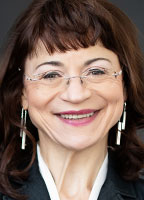Skin and the oral epithelium of the mouth are intricate structures composed of the outer keratinized epidermis and the underlying dermal connective tissue.
Together, they act as the first defensive barrier against harmful external agents. Therefore, it is crucial to maintain homeostasis, replenish, and—if wounded—repair any break in the skin. All of these processes rely heavily not only on the regenerative capacity of several stem cell populations in the skin and its appendages, and the mouth epithelium, but also on their interaction with surrounding dermal tissue. Aberration in the balance between maintenance and regeneration can cause several types of skin disease.
The adult hair follicle, one of the epidermal appendages, is a remarkable model to study how epidermis-derived stem cells contribute to hair regeneration in a cyclical fashion and how the dermal counterpart, the dermal papilla, regulates its functions. Understanding these processes will help us develop new skin and hair regenerative therapies. Investigators at the Black Family Stem Cell Institute work to uncover the key regulatory molecular events that maintain these delicate homeostatic and regenerative processes in the various adult skin compartments.
Investigators with a major focus in skin, hair, and oral stem cell research include:




